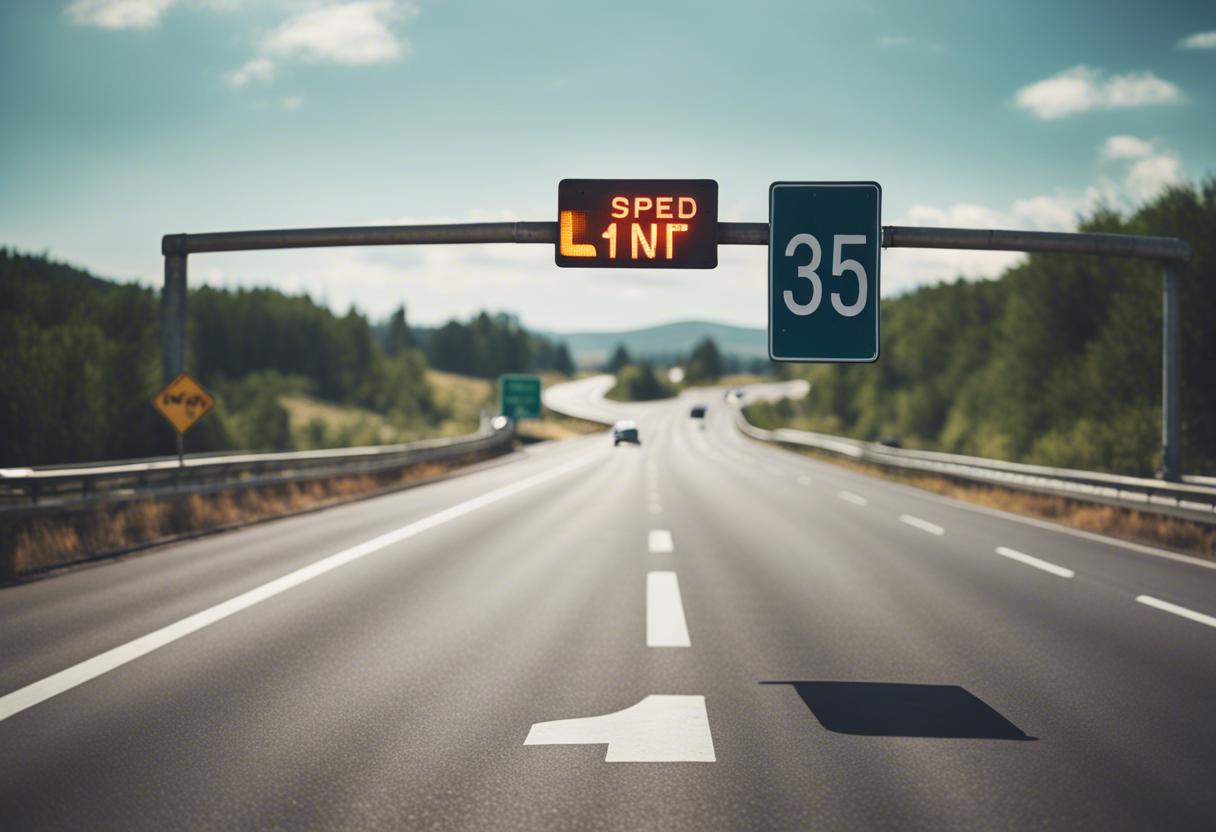This week sees the enforcement of a new law by the EU aiming to compel drivers to maintain a slower speed, a move that could potentially lead to a reduction of up to 30% in crash occurrences, potentially saving around 140,000 lives annually throughout the Continent.
Becoming effective on Sunday, July 7th, the law mandates the installation of a proactive speed limit alert or speed limiter in all vehicles sold within the EU or Northern Ireland. Even though the UK currently has no plans to implement this law, numerous vehicles on sale within the country will likely still be equipped with such systems. These Intelligent Speed Assistance (ISA) systems are designed to aid drivers by reminding them of the prevailing speed limit.
These reminders can employ four different methods, either separately or in combination. The most commonly used – a visual warning displayed on the dashboard and an associated audio signal indicating a breach of the local speed limit – will be implemented in most cars. The system monitors the speed limit through a dual mechanism: a camera positioned in the windscreen that reads local signs and a GPS mechanism that is regularly updated with the speed limits for a specific area.
The system also provides the option for “haptic” feedback, which could be vibration or resistance in the throttle pedal, or a cutoff in the power to the engine or electric motor. The system, however, will not automatically alter the driving speed unless cruise control is activated and the car is equipped with a setup that synchronises the cruise control speed to the speed limiter; not all cars have this function.
Contrary to what some specialised media sources might have you believe, not all cars will be mandatorily restricted to the speed limit as of this Sunday. This law will only apply to vehicles sold after this date. However, many vehicles have been equipped with these systems since 2022, which serve more as a guidance and alert system rather than an active driving intervention. If the driver wishes, these warnings can be bypassed by simply pressing harder on the accelerator.
The effectiveness of these systems is certainly up for debate. Although it is true that higher speeds contribute to severe accidents and the EU estimates that 30% of all vehicle accidents could be avoided with speed restrictors, there are flaws in the technology. The system cannot distinguish between someone slightly surpassing the speed limit and another significantly over-speeding.
It’s very likely that a driver insensitive to the speed limit would disregard such alerts. Also, these systems do not take into account the permissible overestimation of car speedometers, which is legislated to allow for variations in wheel speed and vehicle speed. Consequently, there can be a discrepancy of as much as 5km/h between what your dashboard shows and the actual ground speed of your car.
Over-dependence on active speed limiting devices has been warned against by both the European Automobile Manufacturers’ Association (ACEA), which speaks on behalf of European car manufacturers, and Which?, a customer association. Inaccuracies and outdated speed-limit data have caused many false alerts, says ACEA. They pointed out the lack of harmony in road signs across Europe and inadequately populated digital maps as some of the reasons. Camera-based systems also can’t predict all situations, especially when traffic signs are concealed.
Which? further expanded on this caution, noting instances of incorrect speed limits being detected by their tested cars, like recording 80mph in a 30mph area.
The recent observations of The Irish Times’ Motors team are aligned with the last statement. They have regularly encountered car speed warning systems guiding them to travel at 80km/h along slim village roads while, just moments later, these same systems insist the speed limit on a three-lane motorway is 30km/h, not the actual 120km/h.
Addressing such concerns, the European Commission asserts that these limiters simply offer guidance and are not infallible. It adds emphasis on the driver’s responsibility to adhere to traffic regulations, and suggests the Intelligent Speed Assistance (ISA) system is a helpful tool, meant to caution drivers when appropriate and plausible.
However, there’s a growing worry: These systems may lead drivers to become excessively reliant, causing them to neglect the immediate demands of safe driving. Gemma Briggs of the Open University, along with Helen Wells and Leanne Savigar of Keele University, noted that while it seems ideal to mechanise the decision to speed, simplifying complex driving behaviour into ‘safe’ and ‘dangerous’ for technology to understand has its downsides. They pointed out potential risks, such as promoting the belief that set speed limits are intrinsically safe, even when a slower speed may be wiser.
They also raised concerns about technology that indicates driver fatigue or intoxication and auto-parks if the driver fails to respond adequately. Such tech, they assert, might foster a risky mentality, making drivers believe they can drive when unfit since the car will intervene and protect them. They concluded by stressing that safety requires comprehension, and not just binary classification by technology.
Gain more insight from our Inside Politics podcast, your go-to source for comprehensive political dialogue and analysis.

